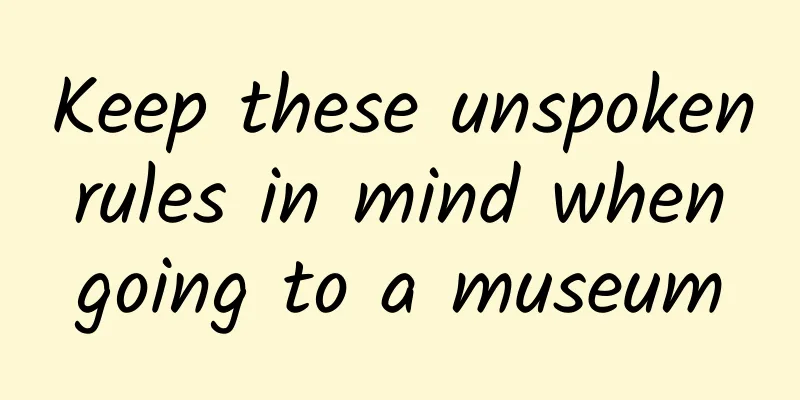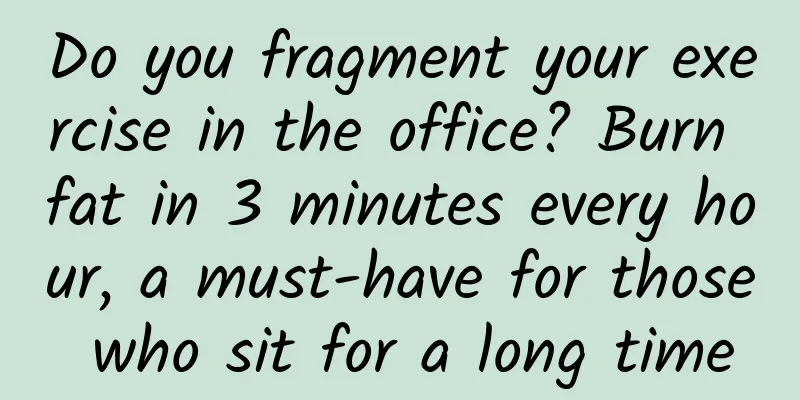Keep these unspoken rules in mind when going to a museum

|
It has become a fashionable thing to check in at a famous local museum when traveling. However, if you are asked to tell me what rules you need to follow when visiting a museum, I believe many people cannot give a complete answer. In fact, there are many categories of museums. Different museums have different requirements for visitors due to different exhibits. Let us tell you the rules you need to follow when visiting a museum! Tuchong Creative 01 A museum is more than just a museum These are actually Museum in a broad sense is a very general concept. Many institutions and places that do not have the word "museum" in their names are actually a type of museum. The more conventional classification method of museums is based on content and management. They are generally divided into several categories, such as comprehensive museums, social history museums, natural and science museums (science and technology centers), fine arts museums, community and ecological museums, and site museums. Next, we will talk about them one by one: Comprehensive museums include museums with both natural and historical sections. Many provincial museums are of this type, such as the Shandong Provincial Museum, Gansu Museum, Heilongjiang Provincial Museum, etc.; social history museums are museums that reflect the history and culture of a region, as well as memorial halls and former residences of various events and figures, such as the Shaanxi History Museum, the Capital Museum, and Xiaoping's Hometown. Some ethnic museums can also be classified as history museums; natural and technological museums refer to various natural museums, science and technology museums (centers), geological museums, planetariums, aquariums, as well as zoos, botanical gardens, etc. Tuchong Creative Art galleries or art museums are easy to understand. They are basically all kinds of museums with art or fine arts as their themes. For example, the China Art Museum and the Shanghai Museum are comprehensive art museums, the Palace Museum is a museum of ancient art and sites, and the Contemporary Art Center is also regarded as a museum because of its collections and fixed displays. However, some art galleries are not included in the list of museums because they have regular sales activities. Community and ecological museums are new forms of museums that protect the material and intangible cultural heritage as a whole and leave the heritage in the local area for compatible development. As Professor Zhang Yuteng said: This is the most poetic museum behavior. Some open-air museums are also included in this category. Site museums are museums with archaeological sites or other human activity sites as their content, such as the Banpo Site Museum in Xi'an and the Terracotta Warriors and Horses Museum (Qin Shihuang's Mausoleum Museum) are representative examples. Tuchong Creative 02 Learn these visiting etiquettes A big improvement in quality There are many rules to follow when visiting a museum. This is not only from the perspective of facilitating museum management and ensuring the safety of exhibits, but also can form a good visiting order and ensure that every visitor can have a better visiting experience in a good atmosphere and environment. The specific etiquette for visiting is as follows: Dress: Although there are no strict requirements, you can generally dress as you would in normal public places. However, slippers, underwear, vests, etc. are still inappropriate. The exhibition hall is a constant temperature environment. Winter cotton-padded clothes and thick coats can be placed in self-service storage cabinets. It is best to prepare a thin coat in summer. Things to bring: Try not to bring items that are not related to the visit. You can deposit your travel bags, clothes, etc. in advance. If you encounter a cramped exhibition hall, please carry your backpack in your hands or carry it on your chest to prevent it from accidentally touching the display cabinets or exhibits. Tuchong Creative Photography: Comply with the museum's regulations. If there are no regulations, follow the following principles: first, do not use tripods or flash; second, do not disturb others' visits; third, focus on the exhibits, and do not take pictures of children (especially prohibited in international occasions) or others at will; fourth, wear black clothes to avoid reflections on the glass (secret). Touching of exhibits and display cases: Touching of artworks and cultural relics is strictly prohibited. Hands-on experience is encouraged for interactive exhibits. Blind people are given priority in the blind exhibition area. Individual visitors may use it out of curiosity after obtaining the consent of the management staff. Try not to touch the display cases and keep a certain distance from them when visiting. This will not affect others and will also have a better effect. Queue up to visit the exhibition: obey the order and the guidance of the staff. During holidays or sensational exhibitions, there will be more people, so you should visit in an orderly manner, follow the flow of the audience, and do not stay for too long. Tuchong Creative Sound requirements: Watch the exhibition quietly, speak softly, and children visiting together should not make noise. Whether in the exhibition hall, interactive space or indoor cafe, try to keep the volume down. Although there is no sound control requirement in the outdoor exhibition area and leisure area, do not make loud noises. Eating, drinking, etc. is prohibited in the exhibition hall. Other prohibited behaviors in public places. 03 Are all the exhibits in the museum real? The museum has done its best to protect them Generally speaking, the cultural relics and artworks exhibited in museums are all authentic. In some cases, replicas are used, but there are very strict restrictions on the use of replicas. Museums call first-, second- and third-level cultural relics precious cultural relics, and their reproduction must be approved. In the following cases, museums will use replicas of cultural relics: The exhibits are "recruited" to participate in more important exhibitions, such as overseas theme exhibitions or national special exhibitions, and the cultural relics are temporarily difficult to return to the exhibition; The exhibits themselves are difficult to repair or restore in the short term, or continued exhibition will cause irreparable damage to the cultural relics, and the exhibits are representative treasures of the museum; Tuchong Creative The local museum failed to collect the important local unearthed objects, but they were collected by the previous or higher-level museums. The local people hope to see them in this museum, and they will also use the form of replicas, which has the meaning of "keeping a record"; The conditions of the library premises do not meet the requirements for safety and environmental control; Fifth, the quality of the museum is too poor, and the reason is unknown. The exhibits in the museum are a legacy of history and are non-renewable. Therefore, in order to protect the exhibits, the exhibition hall has strict requirements on temperature, humidity, illumination, etc. Generally, the exhibits in independent display cabinets are independently controlled by a constant temperature and humidity system. Grassroots museums with poor conditions will also adopt local methods to achieve dust removal, humidification or dehumidification. Tuchong Creative Generally speaking, the temperature of the museum hall is usually set at 26±℃, and the temperature of the exhibition hall is 20±℃; murals, paintings, calligraphy, silk fabrics and other organic cultural relics are very sensitive to light and have strict requirements on illumination. So when you go to some museums and find that the light is particularly dim, you should also be considerate, because the first consideration of the museum's lighting environment is to take good care of the exhibits. 04 Tips for efficient museum browsing worth collecting Private individuals can also open museums If you want to make your trip to the museum more efficient and without regrets, it is very necessary to do your homework in advance and research and develop a visiting guide. First, the museum's opening policy. Most museums are closed on Mondays, and a few are closed on both Mondays and Tuesdays. Find out in advance to avoid a wasted trip. From Tuesday to Sunday, admission is at 9:00 and closing is at 17:00 (no admission at 16:00). Many museums have different opening hours between off-season and peak season, so you need to pay special attention to them. In addition, there will be corresponding policies for special holidays. Tuchong Creative Second, ticket purchase and free policy. The Forbidden City and other heritage museums implement a ticket purchase and reservation system. Most museums implement a free but not ticket-free visiting policy. Third, make an appointment in advance. Use your ID card to make an online reservation with your real name. Some popular museums will also make reservations in different time periods. Especially after the epidemic, museums have limited the number of visitors per day for environmental control purposes. In order to ensure a successful reservation, it is recommended to make an appointment 1-2 days in advance. Remember to bring your ID card on the day of the visit. You will need to use your ID card to pick up your ticket on site after making the reservation. Fourth, plan your visit time. Generally, provincial museums require 1-2 hours to queue for admission and 3 hours to visit. Fifth, dress. Wear clothes that are comfortable for you, especially choose the right shoes. Tuchong Creative Sixth, food. Museums generally have drinking water purification systems, and some also have cafes that provide drinks and light meals. Seventh, shopping. The museum shop is a good place to go. Some peripheral products and souvenirs are not available anywhere else. Eighth, luggage storage equipment, mother and baby rooms, wheelchairs, etc. Most museums have these designs. In addition, many people think that museums are all run by the state, but in fact, museums are divided into state-owned museums and non-state-owned museums. Private institutions and individual citizens can open museums. Among the more than 5,500 museums in my country, non-state-owned museums account for nearly 1/4. In 1996, the Beijing Guanfu Museum opened, which was the first private museum in my country. Author | Pan Shouyong, nicknamed @老潘壹, is a well-known museologist, anthropologist, and university professor Review | Zhang Peng, founder of the Museum in the Ear, executive director of the Beijing Guo Shoujing Memorial Hall This article is produced by the "Science Rumor Refutation Platform" (ID: Science_Facts). Please indicate the source when reprinting. The pictures in this article are from the copyright gallery and are not authorized for reproduction. |
<<: Pharmaceutical Technology Week | Use "whitening pills" when you get tanned? NO, NO, NO!
>>: Can we create new substances by artificially changing the number of protons in the nucleus?
Recommend
An article to understand the principle of QR code
QR code has been applied in all aspects of life n...
German quality, reciprocating double blade heads, Xiaomi Braun electric shaver redefines men's charm
Someone once said that Mijia's products never...
Optimization of Sogou promotion account and writing of excellent creative ideas
A good idea is one that netizens are willing to v...
Why breathing too much oxygen can lead to health problems? Scientists finally figured out why
Scientists have long known that breathing air wit...
Hisense's Liu Hongxin: Never rejected OLED, but more optimistic about laser display technology
Yesterday, we published the article "30,000 ...
Exclusive interview with Getui CEO Fang Yi: Do a good job in message push step by step
From the era of Internet "quantity" to ...
How to plan a marketing campaign?
Why do businesses conduct marketing activities ? ...
Using bullock carts to pull satellites! India, which is "running slowly and slowly", is implementing its cheap lunar exploration plan
Indian lunar probe renderings | Source: ISRO Writ...
Electric Technology Car News: How to choose a hard-core SUV? Trumpchi's new GS7 vs. Harvard H7
Launching two or even more cars at the same time i...
Is it possible that the speed of light is faster in some places in the universe and slower in other places?
The author or source of this article or its origi...
#千万IP创科普# The truth about Scottish Fold cats: the genetic pain behind their cuteness
(All pictures in this issue are from the copyrigh...
How to do Baidu drop-down box promotion, how to brush Baidu drop-down box keywords?
Every webmaster and client who likes SEO wants to...
Why Apple Pay is not popular in China? Apple's efforts are far from enough
At this year's WWDC conference, Apple introduc...
Can hot water disinfect and sterilize bowls? Don't underestimate bacteria, try these methods to kill them →
Author: Xu Dong, Associate Professor, School of F...
This article tells you how to do video SEO marketing?
SEO video marketing starts with figuring out who ...









